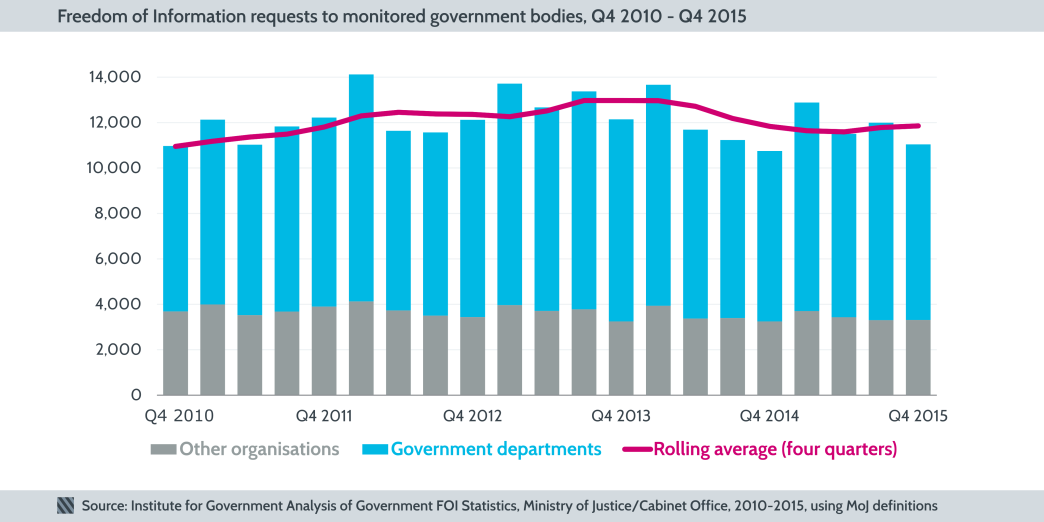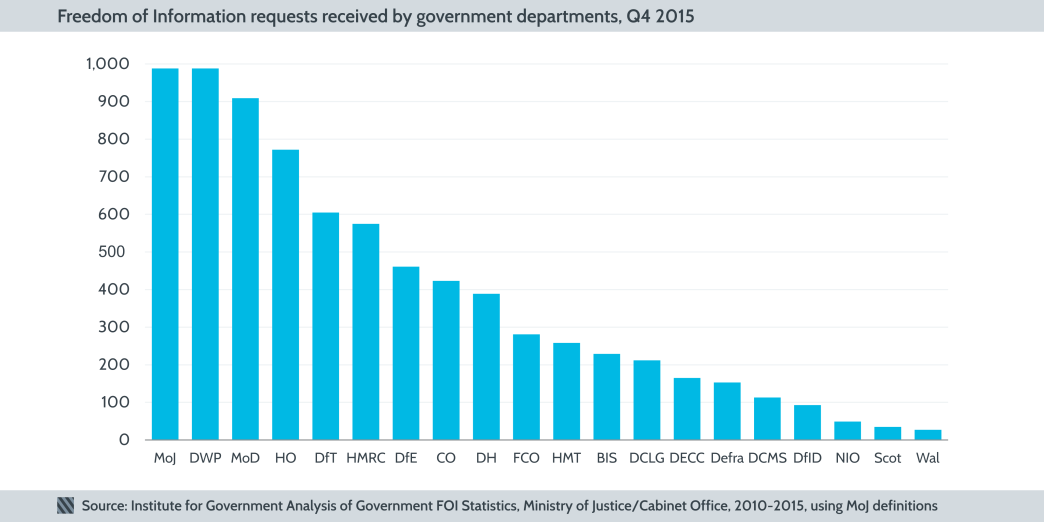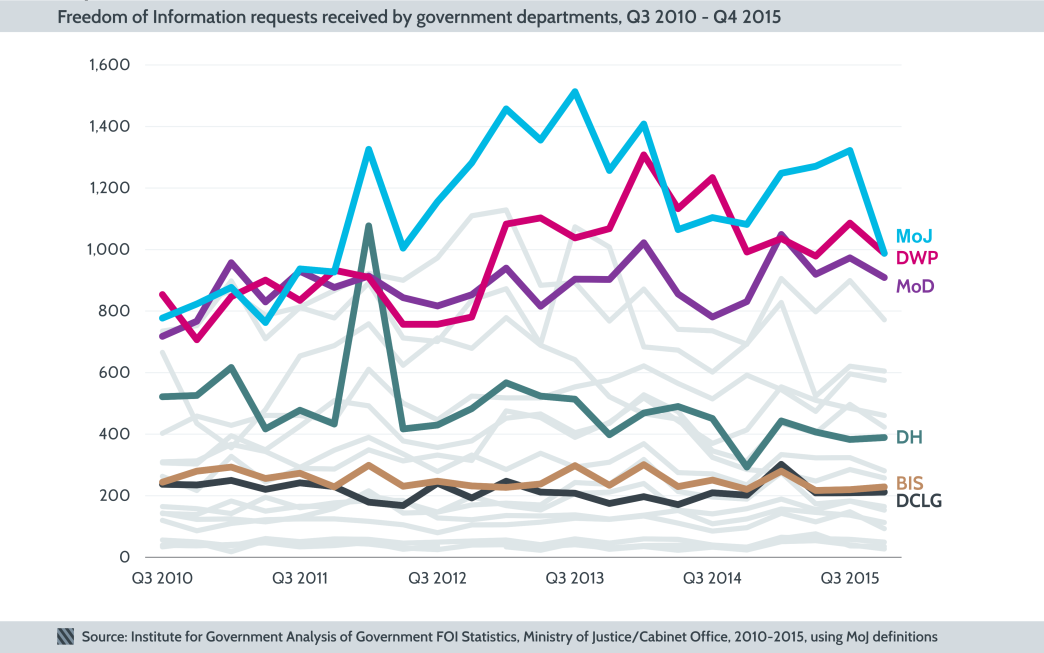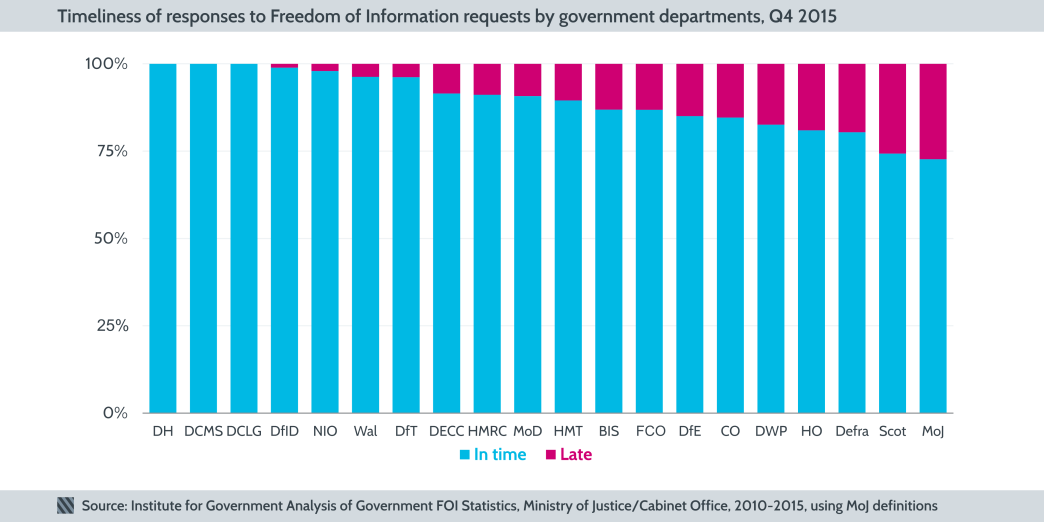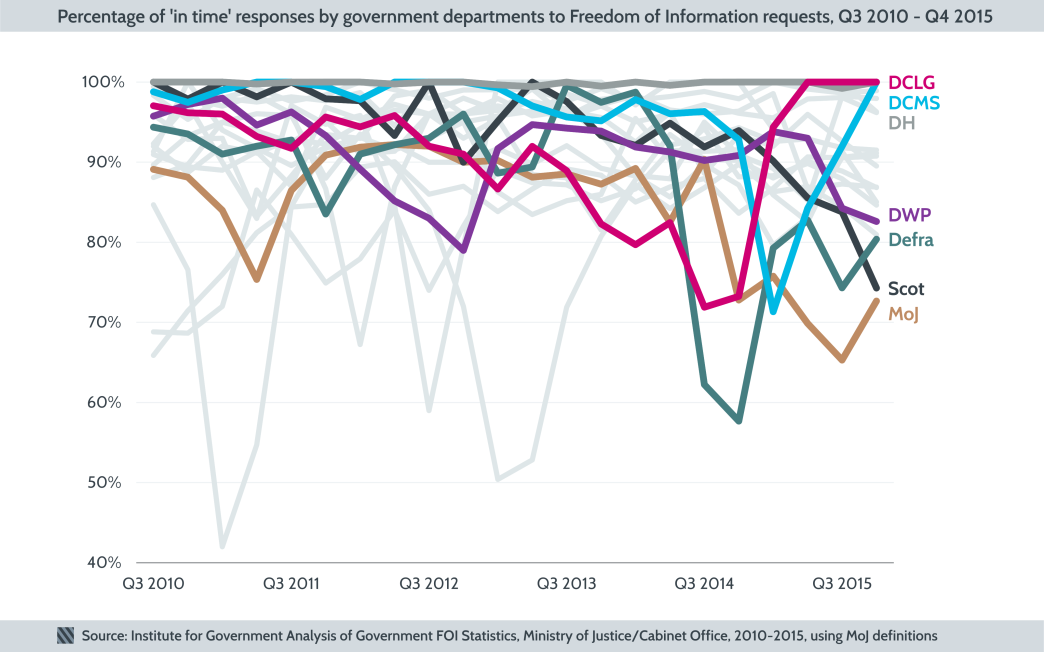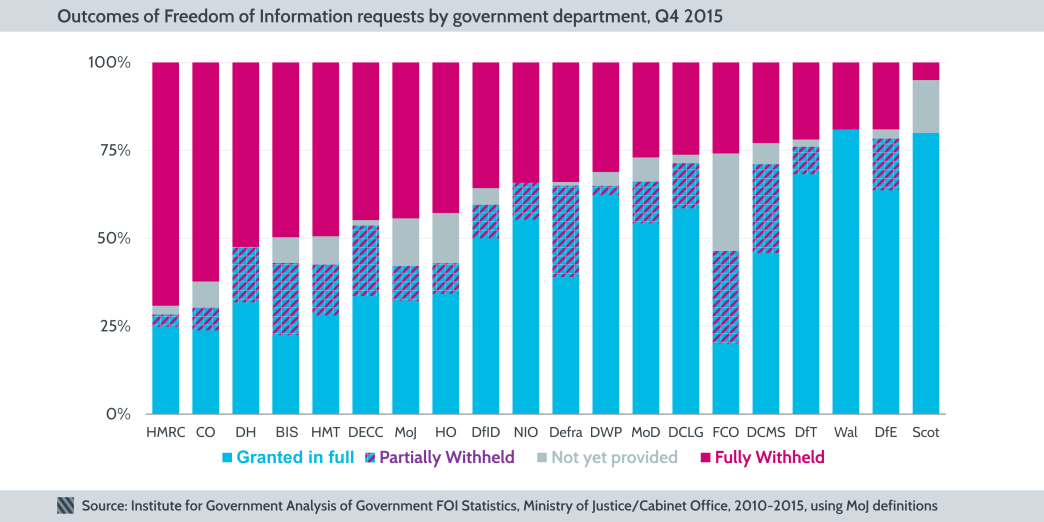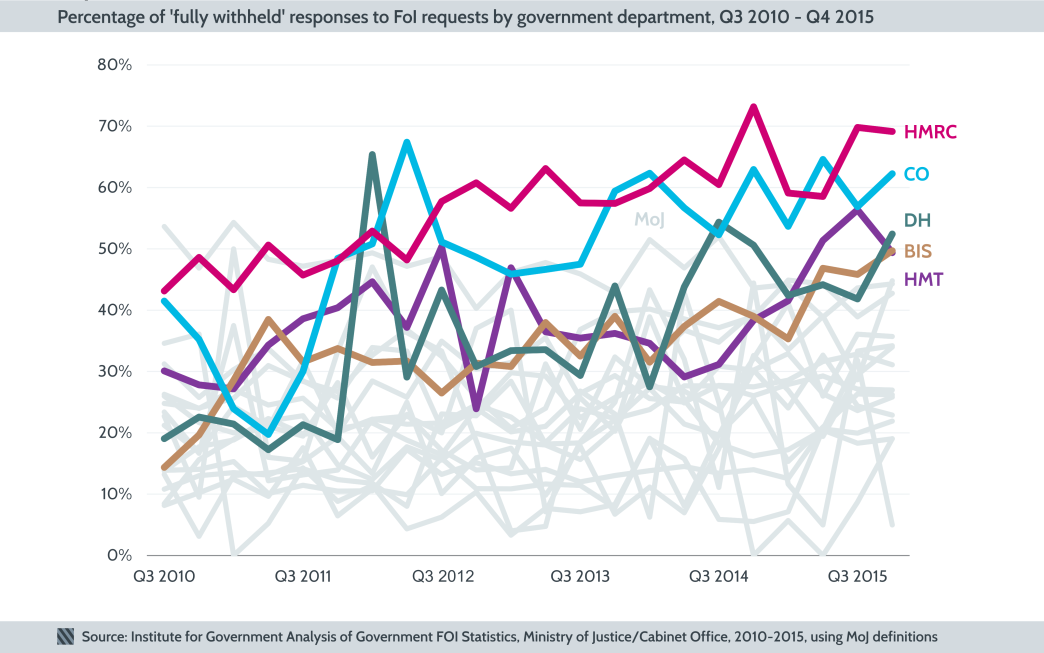Departments in the line of FOIA: how Whitehall responds to Freedom of Information requests
Leah Owen looks at the latest quarterly data on how well government departments and other public bodies are responding to Freedom of Information (FOI) requests.
Between October and December 2015, monitored government bodies received 11,039 FoI requests.
In the last quarter of 2015, government departments (as defined by the Cabinet Office, which publishes the numbers) received 7,725 FoI requests, while other government organisations (see the full list) received 3,314 – a total of 11,039 requests. This was fewer than the amount of requests received in the third quarter of 2015, but more than the 10,749 requests received in the last quarter of 2014. The four-quarter rolling average of FoI requests received for every quarter in 2015 is around the same levels as it was at the end of 2011.
In Q4 2015, DWP and MoJ received the most FoI requests; the ‘territorial’ offices received the fewest.
In line with previous quarters, DWP and MoJ received the most requests in the last quarter of 2015: both received 988. The territorial departments (Scotland, Wales and Northern Ireland offices) received the fewest requests, while Defra, DECC, DfID and DCMS also received fewer than 200 requests.
Most departments received fewer requests than in the previous quarter.
The six departments receiving the most FoI requests – DWP, MoJ, MoD, HO, DfT and HMRC – all received fewer in the last quarter of 2015 than in the previous quarter, as did 12 other departments. Only three departments – DH, BIS and the DCLG – received more requests than in the previous quarter.
In Q4 2015, three departments responded to all FoI requests ‘in time’, but MoJ and the Scotland Office were late to respond to over a quarter.
Organisations are required to respond to FoI requests within 20 working days, except where an extension has been permitted – requests answered within these deadlines are deemed ‘in time’. Three departments – DCMS, the Wales Office and DCLG – responded to all requests on time. Six departments – CO, DWP, HO, Defra, the Scotland Office, and MoJ – failed to reach the minimum standard of responding to 85% of requests ‘in time’ (the general requirement for public bodies, below which formal monitoring is considered). The Scotland Office and MoJ failed to respond in time to over a quarter of requests.
MoJ and Defra have improved their response times – though both are still low – while the DWP and Scottish Office have continued to decline.
At the top of the scale, responding to 100% of requests in time, were DCLG (for the third consecutive month), DH, and DCMS, which has significantly increased its timely response rate from a Q4 2014 low of 71%. The most significant decline in timely responses came from the Scottish Office; already below the 85% minimum threshold in Q3 2015, it fell to 74% in the last quarter. Two departments previously in bottom place have reversed their declines. Defra has climbed from 62% a year ago to 80% in this quarter, while MoJ – still the department with the lowest timely response rate – has climbed from 65% in Q3 2015 to 73% in this quarter. This improvement – while still below the monitoring threshold – follows the Information Commissioner’s Office’s decision in September 2015 to place MoJ under monitoring for ‘unacceptable delays’, in responding to requests.
HMRC and CO remain the departments that most often withhold information in full in response to FoI requests.
CO – the department that took over freedom of information policy from MoJ earlier this year – is one of the departments that most regularly makes use of the exemptions and exceptions permitted by the Freedom of Information Act: in Q4 2015, it granted only 24% of requests in full, partially withheld information in response to 7% and fully withheld information in 62% of cases (7% are yet to be provided). HMRC is the department that has fully withheld information in the highest proportion of cases – 69% in this quarter. The Scottish Office withheld the least information, granting 80% of requests in full, partially withholding none, withholding 5%, and not yet providing data in 15%.
Across all government bodies, the ‘personal information’ exemption is consistently used more than any other, but Environmental Information Regulations (EIR) exceptions have increased.
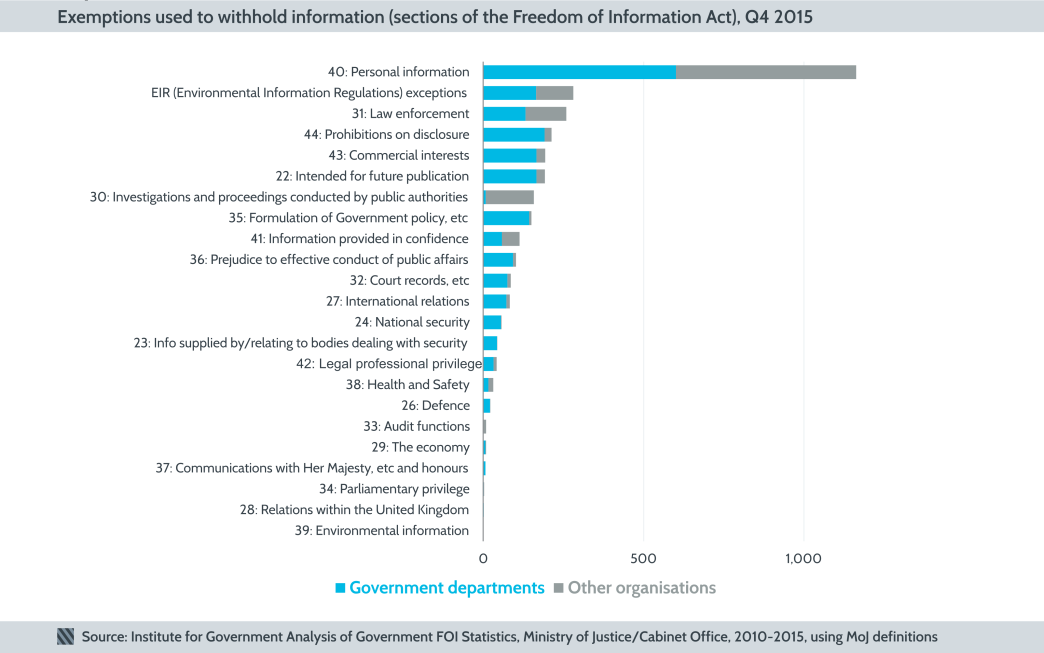
In Q4 2015, the most commonly used exemption was Section 40: Personal Information (36% of exemptions, representing 1,163 requests), followed by EIR exceptions (8% of exemptions, representing 281 requests), and Section 31: Law Enforcement (7%, of exemptions, 259 requests).
The recent report by the Independent Commission on Freedom of Information noted FoI has ‘change[d] the culture of the public sector … enhancing openness and transparency’. We’ll continue to analyse the FoI numbers and whether this remains the case.
